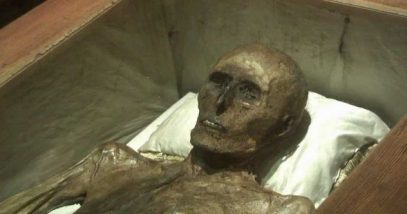Copyright 2021 by Gary L. Pullman
In the first part of this series, we considered this same topic. In this post, we take a look at it from a different perspective.
Woods can be unsettling. Why? They are apart from developed areas, which are products of human knowledge, innovation, art, technology, imagination, and technique. Development takes (and shows) a mastery of the environment, control over nature.
We did not ask trees to assume the dimensions and configurations of floors and walls and ceilings. We used trees to make planks and boards, panels and drywall, just as we used lime or gypsum and sand and water to make plaster and converted sedimentary material into clay to make bricks. Every building, commercial, residential, or otherwise, is a human product, an example of humanity’s power and control over the earth.
Outside cities and suburbs and farms, though, nature, not humanity, rules. Beyond civilization, the wilderness reigns. Woods, like other natural landscapes, represent the untamed world of nature, “red in tooth and claw,” as Alfred Lord Tennyson (1809-1992) reminds us. Our power centers are only fortresses and outposts in an indifferent universe in which menace and death are as likely as benefit and nurture.
Like deserts, islands, mountains, rain forests, swamps, and the open sea, woods, or forests, remind us that human power and authority over nature are limited, especially outside the cities and suburbs and farms that peoples have carved out of the wilderness, and “tamed” (to some extent) for themselves, as centers of human enterprise. (Blizzards, earthquakes, forest fires, floods, hurricanes, landslides, tornadoes, and other natural disasters are also reminders that human power and authority are limited and fragile; both can be lost in a moment of time.)
When we leave behind our homes and communities to venture into the wilderness, we leave behind the support and assistance of government, families, friends, and neighbors; we also leave behind the organizations and institutions we have created and developed over centuries: military forces, police, firefighters, paramedics, hospitals, doctors, nurses, jails, prisons, forts, highways, vehicles. We put ourselves, to a large degree, at the mercy of nature, “red in tooth and claw.”
Certainly, we may have some tools at our disposal: a tent, food, water, a knife, perhaps a pistol or a rifle, a telephone, matches or a lighter, maybe a hatchet. While such items certainly assist us with everyday tasks and provide the means to satisfy basic needs, they might not be all that helpful against a bear, a cougar, a forest fire, a flash flood, illness, or an escaped prisoner.
What copywriter Barbara Gips observed, in suggesting the tagline to her husband, artist Philip Gips, for the Alien movie poster he was creating, “In space no one can hear you scream” is as true in the woods as it is beyond the exosphere or, as Star Wars puts it, “in a galaxy far, far away.” We are cut off, isolated, on our own, without recourse to protection or any other kind of assistance.
People who read our fiction may not remember their vulnerability as they sit down to read a novel or a short story of watch a movie, but they will feel this helplessness and exposure, all right, if we, as writers, do our jobs well, because our fiction—and our settings—will put them at risk, if only vicariously, and the risk will not be slight; it will be the risk of the loss of life or limb. Described properly, an eerie setting can, and should, suggest this vulnerability to injury or death or, at the very least, to peril, to menace, to danger, to jeopardy, to pain and suffering, and, quite possibly, death.
“Think globally, but live locally,” we have been advised. Similar advice is good for writing: “Think cosmically but write personally.” As writers of horror, we have a Weltanschauung, or world view, that is likely pessimistic: we may hope for the best, but we expect the worst. Possibly, that’s the case because we are aware that the shadow of death falls across all things: friends, family, pursuits of happiness, love, and life itself. With some exceptions, for horror writers, life is a tragedy, ultimately: Life is a bitch, and then we die.
Again, we shouldn’t expect our readers to think about such glum ideas as they read our stories, but we should; we need to know what lies ahead, and, we know, what lies ahead is not a pretty or an encouraging sight. All may be well that ends well, but life does not end well. Instead of lecturing readers, we show them. What happens to our characters, we suggest, could happen to our readers. That’s what identification and vicarious experience are all about.
We describe settings as eerie; we show what happens to our characters in such a setting. We leave it to our readers to discern that they, too, could become prey or victims, whether of the environment itself or a wild animal, a monster, a serial killer, or some other peril.
I am studying a picture, now, of woods. The image evokes a feeling of disquiet, of uneasiness; it is unsettling, eerie. I write, describing it.
The fog, white here, gray there, as if unable to settle on one shade or the other, is a wall. Rising from the forest floor, it ascends into the sky, a screen, a barrier that cuts off sight, rather than passage. It does not move, does not waver or drift, but stands, a wall immovable and resolute, sinister in its immovability, in its resolute intent.
Leafless trunks, sparse of branch and twig, stand, tall and thin and dark—at least up close; those more distant are vague suggestions, obscured by the pallid pall of the fog engulfing them, the mist that seems to leech away their vitality, their form, their very being. They are more the ghosts of frees, it seems, pale and thin in the motionless haze of the fog. The stand of trees is lost, kindling wood awaiting the flames, should lightning strike this dreary wood in a storm that has not gathered yet, but will.
The fog and the frail, thin trees I take in at a glance, but my eye is arrested by the leaves shed by the trees, the leaves lying, by the hundreds and the thousands, red, like drops of blood, upon the forest floor, lit by a moon unseen—or, perhaps, by an unearthly, unnatural light not of this world. It is as if the very trees or the earth itself bleeds! What power could injure the land itself, blight a forest, obscure the wilderness itself with a veil that is not of this world?
Let’s trek through this forest, the forest of my description, and mark the rhetorical trail we have forged through the narrative wilderness, the better to see the way we have come, and how.
We start with a personification, as the fog is unable to decide (“settle on”) whether to be white or gray and, consequently, is both. An effect of the weather, fog has no intelligence or will—except that we have given it both! If the fog is possessed of a mind that can consider alternatives and make choices, in principle, at least, it could decide to act against us and plan an attack upon us. Its indecisiveness may not work to our advantage. If the fog is unable to decide how best to kill us, it might try several methods, proceeding by trial and error. It is also a barrier, cutting us off—from what? Community? Society? Assistance? The infrastructure of organizations and institutions? Highways? Resources? Or is the fog preventing us from seeing whatever lies beyond it—our way out, perhaps, our avenue to rescue or escape? Whatever its aim, the fog’s intent seems hostile. It is also resolute, determined, staunch: it will not permit sight and the knowledge that vision provides. By blinding us, it keeps us ignorant and, therefore, vulnerable—perhaps to whatever it hides.
The trees of the forest suggest that nature itself is under attack. The trees are bare, leafless, perhaps lifeless. They are thin, pale, perhaps sickly. They are “engulfed” by the parasitic fog, which seems to “leech away their vitality, their form, their very being.” Whatever threatens the trees—the very forest itself—is likely to threaten any who enter the forest, including us. Seen from a distance, the trees appear to be already dead, to be mere “ghosts of” themselves. They seem to be “lost” souls, as it were, awaiting the destructive “flames” of divine judgment, of a wrathful god’s lightning bolt. We, who have entered the forest, are likewise under the sentence of divine judgment.
Finally, our gaze is “arrested” by the sight of the blood-red, fallen leaves, which make it appear that “the very trees or the earth itself bleeds!” We wonder, as does the omniscient narrator, “What power could injure the land itself, blight a forest, obscure the wilderness itself with a veil that is not of this world?” Whatever it is, it is a power with which to reckon, to be sure!
These techniques—personification; ambiguous, paradoxical personality traits; and suggestions of a force able to attack and drain the vital forces of nature itself, with specific references to tangible natural objects, fog, trees, and leaves—create an eerie setting that imperils both the forest and anyone, including the story's characters and we, readers who identify with the characters, conveying feelings of helplessness, vulnerability, confusion, and terror.






_theatrical_poster_(retouched).jpg/1200px-Psycho_(1960)_theatrical_poster_(retouched).jpg)






















.jpg&f=1&nofb=1)


